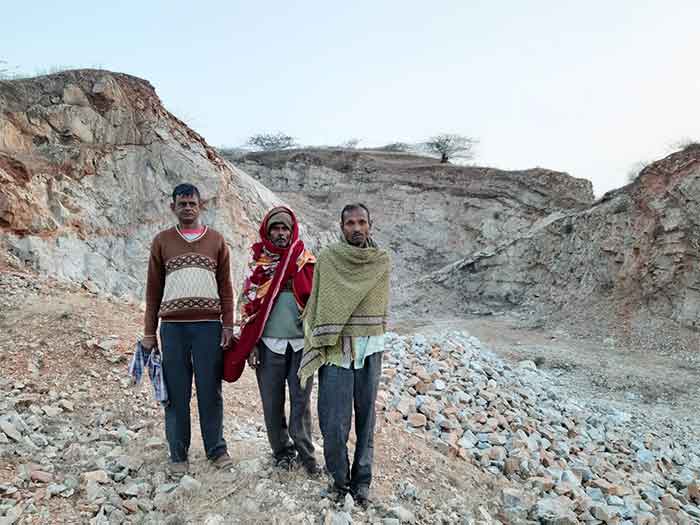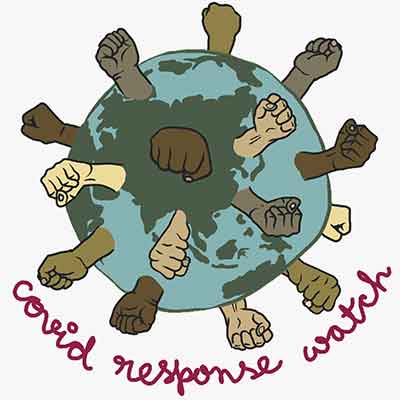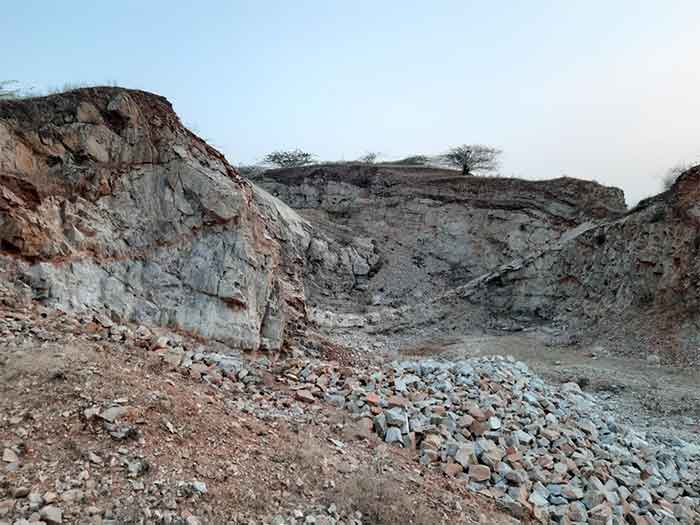
In March 2020, while activity of all kinds came to a standstill across the country due to the Covid lockdown, the impact was negligible on one industrial sector in Rajasthan – mining.
After a 10 day shut down in April 2020 initially, the state government gave permission for mining, a sign of the enormous political and economic clout of the sector. The sector’s undue influence is also quite evident in the way mining, both legal and illegal, is allowed to get away without any concern for safety of workers or pollution of the environment.
Activists working on these issues in the state say that a major disaster is waiting to happen, like in the mines of Jharkhand where every year dozens of workers die in mining accidents.
On November 26 this year for example 4 workers were trapped in a closed coal mine in Bokaro, Jharkhand and given up for good, when they managed to come out on their own after 96 hours. The four workers had gone to extract coal in a coal mine that had been closed for years and were trapped inside due to a cave-in.
Mining is also one of the main occupations in Rajasthan. According to the Mines Department, there are more than 32 thousand mining leases in the state. These include leases for mining of principal, secondary minerals. Natural sand stone is also mined in 19 districts and is supplied to the country and abroad.
The number of laborers associated with the mining business in Rajasthan is about 25- 27 lakhs. Incidents of mine collapse and villagers getting trapped in closed mines are also becoming common in Rajasthan. There are many reasons for this. The mines are left open by the owners after arbitrary mineral exploitation. And as the local villagers do not get any regular paid employment from the activity they are often tempted to get into these mines using artisanal mining tools without any safety precautions.
People are mining using crude tools in closed asbestos mines
Mining of asbestos was banned in 1986 following the instructions of the Government of India across the country, including Rajasthan, in order to phase out the carcinogenic material. As the lease of asbestos mines expired, mining also stopped. But these mines were left open by private leaseholders after the lease expired, whereas there are instructions in the Mineral Policy to close them after the lease expires.
The National Green Tribunal (NGT) had also ordered the Rajasthan government in 2018 to close such open mines, but those orders have not been fully implemented so far. There were asbestos mines in Udaipur, Ajmer, Bhilwara, Dungarpur, Pali, Rajsamand and Sirohi and even after the ban, asbestos mines are open in these districts, which is a major threat to safety of the local people.
Sometimes the cattle of the villagers fall and die in these mines. Asbestos mines were the means of livelihood of some villagers. After leasing, the lease holders keep only a small number of local laborers for mining. A large number of migrant laborers work in the mines of Rajasthan.
That is why if the lease of a mine expires, the local villagers ‘secretly’ go to these mines. Since they extract asbestos with their traditional tools, there are no security arrangements. Accidents often happen because of this. Due to the government ban, this work of people is seen as illegal and such accidents do not even come in the records.
 Rana Sengupta, who has been working for the rights of mine workers in Rajasthan for a long time, is the Managing Trustee of an organization named Mazdoor Suraksha Abhiyan or Mine Labour Protection Campaign. Rana says, “ Mining using modern technology is still very rare today in India. The laborers work in the mines in the same old artisanal way. The government initiated the lease or license system to improve the situation, but the government could not provide employment security to the local people. The company which got the mining license also brings laborers from outside. Local people feel insecure from the point of view of employment due to the coming of migrant labour”.
Rana Sengupta, who has been working for the rights of mine workers in Rajasthan for a long time, is the Managing Trustee of an organization named Mazdoor Suraksha Abhiyan or Mine Labour Protection Campaign. Rana says, “ Mining using modern technology is still very rare today in India. The laborers work in the mines in the same old artisanal way. The government initiated the lease or license system to improve the situation, but the government could not provide employment security to the local people. The company which got the mining license also brings laborers from outside. Local people feel insecure from the point of view of employment due to the coming of migrant labour”.
Rana further adds, “That’s why when the lease expires, the local people go down to that mine and do the mining in the old fashioned way in order to make their livelihood possible. That is why it is necessary that the panchayat and local people should be consulted in the place where the mine allocation is taking place. If this does not happen then people stand against that mining company or their artisanal mining activities are declared illegal according to government rules. The Mines Department also does not pay much attention to this problem”.
On the question of solutions, Rana says, “ The solution to this problem is very simple. A policy should be made to give a share to the local people and workers in the mining allocation. The funds of the District Mineral Foundation Trust (DMFT) set up for the development of mining-affected areas should be properly and fully utilized. It should be made mandatory to close the mines whose lease has expired and a system should be put in place for its monitoring.
Mining mafia

Kailash Meena has been fighting for the last 20 years against illegal mining and the mining mafia in Neemkathana area of Rajasthan. Meena, a social worker, says that those who get mining leases exploit the site arbitrarily and leave the mines open after the lease period is over. The biggest loss is to the common people there. Either the local people fall victim to accidents or the poor people get down into the mines with chisels and hammers, which is a very dangerous and unsafe method.
Meena says, “ In June this year, three people drowned in a mine in Meena Ki Nangal village of Patan tehsil of Neemkathana. Due to illegal mining, the mine was filled with water, in which mining was not taking place. The three youths had gone to take a bath in the mine. One youth died due to being trapped in the pit and both of them also died in the process of saving him. The bodies of all three could be retrieved after two days. Divers were called from Jaipur to find the body.”
Meena says that open mines are becoming a threat not only to humans but also to wild animals. According to the data collected by him, 15 panthers have died due to falling in open mines in Neemkathana area since 2016. There is no count of animals like cow, buffalo, goat that have also died.
At the same time, Kailash says that while giving mining lease, there should be fencing of that mine from all sides. The mining area should be declared as no man’s land. After the lease expires, the owner of the mine should be forced to close it.
Covid hit migrant workers returned to the mines
Rana Sengupta says, “ Thousands of people who fled the cities due to Covid returned to their villages. After being unemployed for a few months, they finally took up traditional tools and started working in the mines. There were neither any security arrangements nor any permanent wages in these mines. Along with the men, the women of the house and many small children also started working in the mines. Even today, hundreds of laborers have stayed back in their villages and are working in the mines. Whereas these are the same people who had left mining work a few years ago and went to work in other states.”
But during this time not a single penny of DMFT (District Mineral Foundation Trust) was spent for development in the mining affected areas. There are natural sand stone mines in the eastern districts of Rajasthan. In 2020-21, not a single rupee was spent from DMFT in districts like Jaipur, Alwar, Dausa, Dholpur, Karauli and Sawai Madhopur. Nor was any development work approved from DMFT in these districts.
As of March 2021, the Rajasthan government has more than Rs 1073 crore accumulated in DMFT, whereas in 2020 this amount was only Rs 1016 crore. It is clear that the income from mining has increased in the state during the Covid period, but this fund has not been used for development works in mining affected areas. During 2020-21 in all the districts, development works worth only Rs.303 crores have been approved, while the income was Rs.1073 crores. The mining sector contributes 6 per cent to the GDP of Rajasthan. The revenue of the Mines Department is more than Rs 5000 crore.
Varun Sharma, Program Director, Association for Rural Advancement through Voluntary Action and Local Involvement ( Aravalli ) says, “ Mining is one of the main sources of income for Rajasthan. It is clear that people are affected in the mining sector, but DMFT has been formed to solve it. People should not do mining artisanally, for this they should be linked to employment through DMFT or such means so that they do not get into mining illegally and become victims of accidents.”
Covid Response Watch called the Director of the Mines Department to discuss the matter, but he said he would speak later, citing a meeting. After that he did not answer repeated phone calls.
Madhav Sharma is a journalist based in Jaipur, Rajasthan
Related posts:
Related posts:
Views: 0
 RSS Feed
RSS Feed

















 December 7th, 2021
December 7th, 2021  Awake Goy
Awake Goy  Posted in
Posted in  Tags:
Tags: 
















